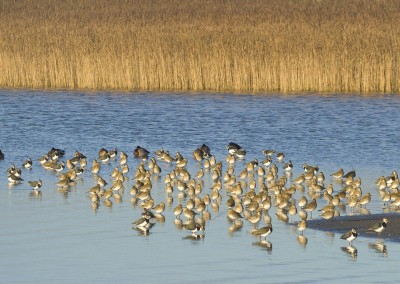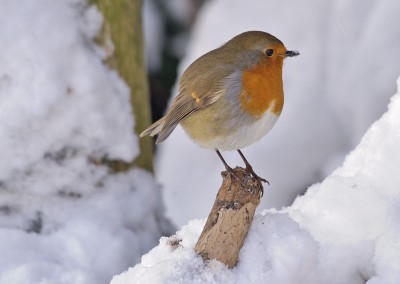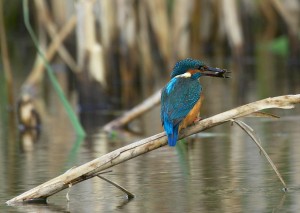Survey
Birds have evolved to utilise almost every habitat in the 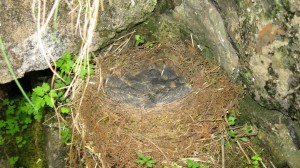 world, and as such are a very diverse group of animals that are present at most sites.
world, and as such are a very diverse group of animals that are present at most sites.
They are particularly vulnerable during the breeding season, when all wild birds are protected by law.
Surveys for proposed windfarms are carried out following specific set criteria and generally cover a full year of observations.
Breeding Bird Surveys
Breeding bird surveys are usually carried out using the Common Bird Census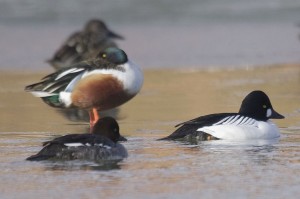 methodology which comprises a number of site visits (6-10) during the breeding season (mid-March to mid-August), during which all bird species, numbers and activity are recorded. The results are presented as a series of maps that are analysed to obtain the number and distribution of territories of each species present.
methodology which comprises a number of site visits (6-10) during the breeding season (mid-March to mid-August), during which all bird species, numbers and activity are recorded. The results are presented as a series of maps that are analysed to obtain the number and distribution of territories of each species present.
Other survey methodologies include:
- Searches for nests and other field signs, including owl pellets, when assessing a structure like a barn for use by breeding birds;
- Windfarm surveys carried out following specific set criteria and generally covering a full year of observations;
- Line transects (a path across an area used for sampling);
- Point counts (where the observer stands at a fixed point).
If required, Barrett Environmental Ltd can undertake studies of individual species.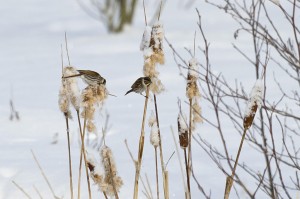 Schedule 1 species (The Wildlife & Countryside Act, 1981, as amended), such as peregrine falcon and barn owl can be studied under licence. Long term studies using techniques like bird ringing can also be undertaken.
Schedule 1 species (The Wildlife & Countryside Act, 1981, as amended), such as peregrine falcon and barn owl can be studied under licence. Long term studies using techniques like bird ringing can also be undertaken.
Wintering Bird Surveys
These surveys are used to record feeding and roosting bird activity, particularly of large assemblages of birds in key wintering habitats. At least 4 visits are made between November and February.
Legislation
Breeding birds are protected by Section 1 of the Wildlife and Countryside Act (1981, as amended). All birds, their nests and eggs are protected by law and it is thus an offence, with certain exceptions, intentionally to:
- Kill, injure or take any wild bird;

- Take, damage or destroy the nest of any wild bird while it is in use or being built;
- Take or destroy the egg of any wild bird;
- Have in one’s possession or control any wild bird (dead or alive) or any part of a wild bird, which has been taken in contravention of the Act or the Protection of Birds Act 1954;
- Have in one’s possession or control any egg or part of an egg which has been taken in contravention to the Act. This includes items taken or killed before the passing of the Act.
- Have in one’s possession or control any live bird of prey of any species in the world (with the exception of kestrel, sparrowhawk, buzzard, vultures and condors) unless it is registered and ringed in accordance with the Secretary of State’s regulations;
- Have in one’s possession or control any bird of a species occurring on Schedule 4 of the Act unless registered (and in some cases ringed) in accordance with the Secretary of State’s regulations;
- Disturb any wild bird listed on Schedule 1 at all times, for example, barn owl and kingfisher.
Different bird species are afforded protection under other legislation including the EU Birds Directive (79/409/EEC) and Bern Convention. Many birds are listed in the NERC Act and the presence of these highlighted in survey results.
Wintering birds have little protection under the Wildlife and Countryside Act (1981, as amended). The exceptions under Section 1 are:
- Kill, injure or take any wild bird, excepting birds listed on Schedule 2;
- Have in one’s possession or control any wild bird (dead or alive) or any part of a wild bird, which has been taken in contravention of the Act or the Protection of Birds Act 1954;
- Have in one’s possession or control any egg or part of an egg which has been taken in contravention to the Act. This includes items taken or killed before the passing of the Act;
- Have in one’s possession or control any live bird of prey of any species in the world (with the exception of vultures and condors) unless it is registered and ringed in accordance with the Secretary of State’s regulations;
- Have in one’s possession or control any bird of a species occurring on Schedule 4 of the Act unless registered (and in some cases ringed) in accordance with the Secretary of State’s regulations;
- Disturb any wild bird listed on Schedule 1.

